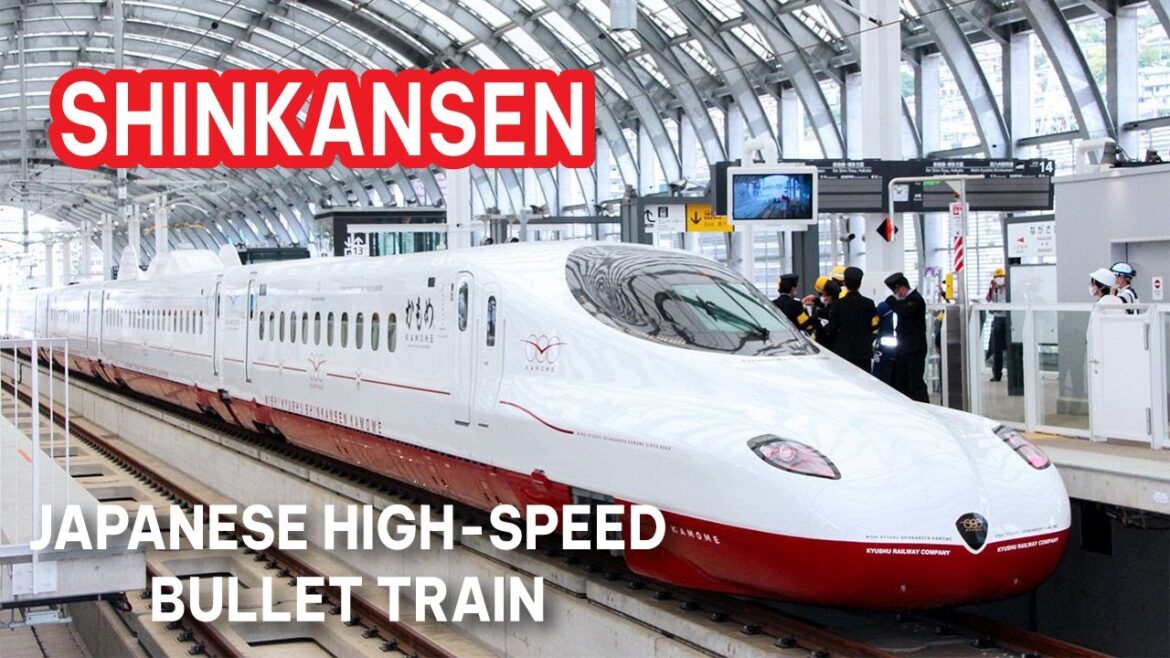#ShinkansenAdventures #JapanTravel #BulletTrainRide
Train Route: The most common route for traveling from Tokyo to Hiroshima is the Tokaido/Sanyo Shinkansen Line. You’ll start at Tokyo Station and end at Hiroshima Station.
Train Options: There are different types of Shinkansen trains operating on this route, including Nozomi, Hikari, and Sakura. Nozomi is the fastest, but it is not covered by the Japan Rail Pass for tourists. Hikari and Sakura trains are covered, and they offer slightly slower but still fast and comfortable journeys.
Train Duration: The travel time from Tokyo to Hiroshima depends on the type of train you choose. Nozomi trains take about 4 hours, while Hikari and Sakura trains take around 4.5 to 5 hours.
Train Schedule: Shinkansen trains operate frequently throughout the day. You can check the timetable on the official websites of Japan Railways (JR) or use online travel platforms that provide train schedules.
Seat Reservations: It is recommended to make seat reservations, especially during peak travel seasons or holidays, to secure your preferred seats. You can reserve seats at JR ticket offices or use ticket machines at major train stations.
Japan Rail Pass: If you are a foreign tourist, you may consider purchasing the Japan Rail Pass before your trip. The pass allows unlimited travel on JR trains, including the Shinkansen, for a specific period. Note that the Japan Rail Pass does not cover Nozomi trains, so you’ll need to choose Hikari or Sakura trains.
Departure and Arrival Stations: In Tokyo, you’ll depart from Tokyo Station, which is centrally located and well-connected to other parts of the city. In Hiroshima, you’ll arrive at Hiroshima Station, which is also centrally located.
Luggage Storage: Shinkansen trains have designated luggage storage areas, including overhead racks and spaces behind the seats. If you have larger luggage, there are also luggage storage services available at major train stations.
In-Train Facilities: Shinkansen trains provide comfortable seating, power outlets, and Wi-Fi on board. Some trains also have dining cars where you can purchase snacks, meals, and drinks during the journey.
Enjoy the Scenery: The Shinkansen journey from Tokyo to Hiroshima offers beautiful views of the Japanese countryside, including mountains, rivers, and towns. Make sure to have your camera ready to capture the scenic landscapes along the way.
Hiroshima Station: Hiroshima Station is the main train station in Hiroshima City. It is a large and modern transportation hub with various facilities, including restaurants, shops, and tourist information centers. The station is well-connected to other parts of the city through public transportation options like buses and taxis.
Miyajima Island: If you have extra time during your visit to Hiroshima, consider taking a side trip to Miyajima Island, also known as Itsukushima. It’s a small island famous for the iconic floating torii gate and Itsukushima Shrine. To reach Miyajima, you can take a short train ride from Hiroshima Station to Miyajimaguchi Station, and then a ferry to the island.
Hiroshima Peace Memorial Park: A significant attraction in Hiroshima is the Peace Memorial Park, located near the city center. This park is dedicated to promoting peace and commemorating the victims of the atomic bombing in 1945. It includes various memorials, the Peace Memorial Museum, and the iconic Atomic Bomb Dome, which is a UNESCO World Heritage site.
Hiroshima Castle: Hiroshima Castle, also known as Carp Castle, is a reconstructed castle that serves as a museum showcasing the history and culture of Hiroshima. It offers panoramic views of the city from its top floors and is a popular tourist destination.
Okonomimura: Hiroshima is renowned for its local cuisine, and one of the must-try dishes is okonomiyaki, a savory pancake made with various ingredients. Okonomimura is a multi-story building in Hiroshima that houses multiple okonomiyaki restaurants. It’s a great place to sample different styles of this delicious dish.

